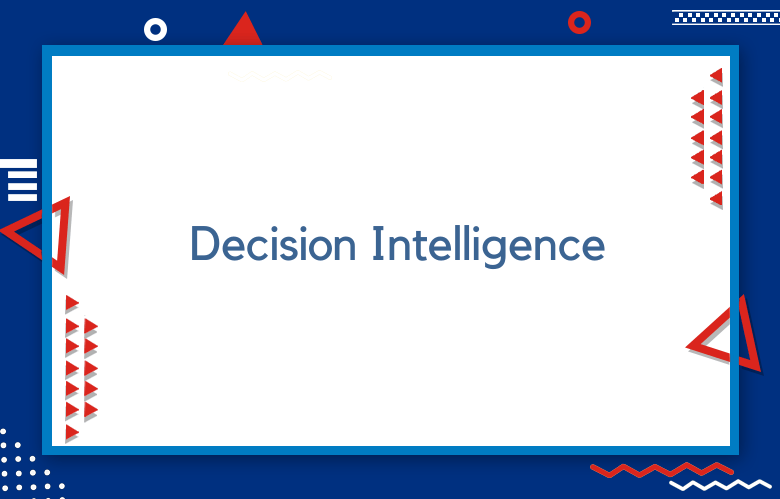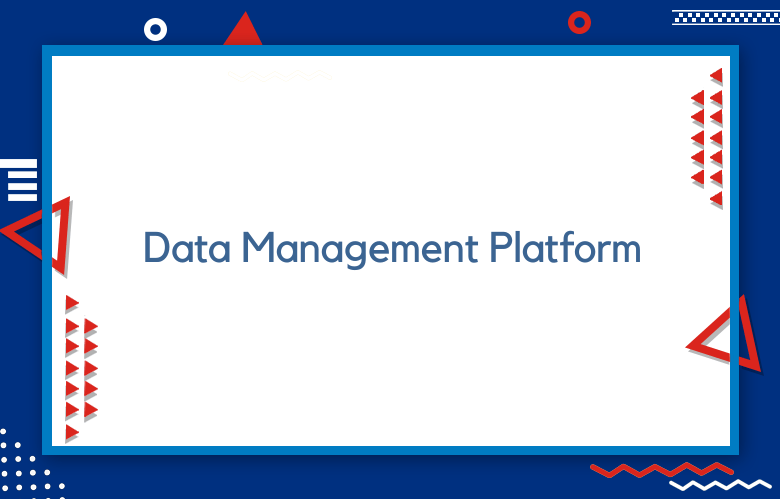Turning Marketing Data into Actionable Insights using Decision Intelligence

The volume of data that marketing teams generate can be overwhelming. However, with the right decision intelligence tools, this data can be converted into actionable insights.
Decision intelligence can help marketing teams make more intelligent decisions about where to allocate their resources by harnessing machine learning and human expertise.
We’ll explore how decision intelligence can turn marketing data into valuable insights.
Like most marketing professionals, you have a wealth of data. But what good is all that data if you can’t turn it into actionable insights?
That’s where decision intelligence comes in. Decision intelligence is all about using data to make intelligent decisions to grow your business.
We’ll show you how to use decision intelligence to turn your marketing data into actionable insights.
Are you struggling to make sense of all your marketing data?
You’re not alone. Given the sheer volume of data available today, it can be challenging to know what to do with it.
But don’t despair – decision intelligence can help turn your data into actionable insights.
Keep reading to learn more about how decision intelligence can help you make better marketing decisions.
What is decision intelligence, and why do you need it for your marketing data?
Decision intelligence can help you make sense of your marketing data to make smarter, more informed decisions.
Decision intelligence can help ensure that you’re using your marketing data to its fullest potential and making the best decisions for your business.
Decision intelligence is the ability to make informed decisions based on data. It’s essential for marketing data because it helps you understand what your customers want and need.
Without decision intelligence, you’re essentially flying blind. You might be able to collect all the data in the world, but if you can’t interpret it and use it to make decisions, then it’s all for nothing.
So, if you’re serious about your marketing data, you need to start using decision intelligence to ensure you’re making the best possible decisions.
Decision intelligence is a term that encompasses a variety of data-driven methods used to make better decisions. It can be used in many different settings but is especially valuable in marketing.
There are many benefits to using decision intelligence for marketing data. It can help you better understand your customers and make more informed decisions about your marketing strategy. Additionally, it can help you optimize your spending and improve your ROI.
How to get started with decision intelligence and begin transforming your data
You’ve reached the right place! I’ll show you how to start your decision intelligence journey and transform your data.
There are many ways to apply decision intelligence to your data, and there are even a few approaches to getting started!
The benefits of using decision intelligence for your business
Decision intelligence can help you make better business decisions. You’ll be able to predict what your competitors are doing and take any necessary steps to keep up with them.
Decision intelligence offers a powerful way to make business decisions. If you’re interested in improving your company’s decision-making processes, it can help you be more successful.
Decision intelligence is a great way to make business decisions. It works because it’s backed by science and data, so you’ll make better decisions.
The first benefit is that decision intelligence helps you cut costs by replacing people with technology.
Decisions are made every day at businesses of all kinds. Some companies use a subjective approach to decision-making, and others employ an objective, data-driven method for important decisions.
Starting a business is hard, but one way to make it easier is to use decision intelligence. Decision intelligence helps with multiple aspects of your business, such as improving skills and increasing productivity.
Decisions are an essential thing in business. If you make a good decision, your business will thrive because you can predict how customers will react.
The key to a successful business is good products and understanding your customers. Decision intelligence allows you to analyze how people make decisions and use that knowledge to improve everything from web design to marketing campaigns.
How to collect, organize, and analyze marketing data
If you’re looking to collect, organize, and analyze marketing data, there are a few things you’ll need to do. First, you’ll need to identify what kind of data you need and where you can find it.
Once you’ve collected the data, you’ll need to organize it in a way that makes sense for your analysis.
Finally, you’ll need to choose the right tools and methods for analyzing your data. By following these steps, you can ensure you’re getting the most out of your marketing data.
You can collect marketing data from surveys, interviews, focus groups, and questionnaires. To organize the data, you can create a system for categorizing and labeling it. Then, you can analyze the data to look for trends and relationships.
There are several key ways to collect, organize, and analyze marketing data.
One way to collect marketing data is through surveys. You can create surveys to send to your target market or customers.
Surveys are a great way to get feedback about your product or service. Focus groups are another way to collect marketing data.
Focus groups allow you to interact with potential customers and get their thoughts and opinions on your product or service.
Once you’ve collected your data, it’s essential to organize it. You can create a spreadsheet or use software specializing in data organization. This will help you make sense of the data and find patterns or trends.
There are many ways to collect marketing data. Organizing it can be a challenge, but several methods can be used. Once data is collected and organized, it can be analyzed to glean valuable insights.
How to Collect Marketing Data
The first step is to choose suitable data sources. You should consider both primary and secondary data sources.
Once you’ve collected your data, the next step is to organize it. This can be challenging, but it’s essential to take the time to do it correctly.
There are several different ways to collect data, so choose the most suitable method for your needs.
Finally, it’s time to analyze your marketing data. This is where you’ll start to see the results of your efforts. By analyzing your data, you can begin to identify patterns and trends.
This will help you make better decisions about your marketing strategy in the future.
You can take a few steps to collect, organize, and analyze marketing data effectively.
First, you must establish what kind of data you want to collect. Do you want to track consumer behavior?
Survey customer satisfaction?
Keep track of your own sales numbers.
Once you know what kind of data you wish to collect, you can establish how you will manage it.
Next, you need to organize your data. This step is crucial to analyzing it effectively later. Breaking it down into smaller chunks can help you see patterns and trends you might have missed otherwise.
Finally, once you have collected and organized your data,
How to use Decision Intelligence to turn marketing data into actionable insights
Decision intelligence must be used to turn marketing data into actionable insight. Businesses can make better-informed decisions that improve results by analyzing past decisions, understanding trends, and utilizing predictive analytics.
This process begins with understanding the available data and isolating the most relevant information. Once this data has been collected, it can be analyzed to provide insights into customer behavior, industry trends, and other essential factors.
With this information, businesses can make more informed decisions about pricing, marketing strategies, product development, and other areas of operations.
Ultimately, decision intelligence allows companies to use data to make better decisions that improve outcomes.
One way to use decision intelligence is to turn marketing data into actionable insight. This can help improve your marketing strategy and make it more effective.
Here are some steps you can take to do this:
First, collect data from various sources. This might include customer surveys, sales figures, website analytics, etc.
Next, analyze the data to look for trends and patterns. This will help you understand what customers want and how they behave.
Finally, use this information to make better decisions about your marketing efforts. This could involve creating new campaigns, adjusting your budget, or changing your target audience. You can ensure that your marketing efforts are more effective and efficient by using decision intelligence.
How to continue getting the most out of your data with Decision Intelligence
With decision intelligence, you can make sense of your data and continue getting the most out of it.
There are many ways to expand your data and make better decisions. One of the best ways to do this is by connecting systems, which enables you to get more sophisticated results from your analysis.
Decision intelligence is a unique opportunity to use data science, business analytics, and advanced decision-making tools to transform data into profitable insights.
The field of data science is expanding rapidly, and the demand for qualified professionals continues to grow.
If you want to get the most out of your data and take advantage of it, you should consider using decision intelligence.
How to collect and analyze data to identify trends and patterns
One way to collect data is through surveys. This can be done by observing people or things over time and noting any changes or patterns.
Are you interested in collecting and analyzing data?
It can be a great way to identify trends and patterns. There are a few essential things to keep in mind when doing this:
- You need to choose the correct data to collect.
- You need to make sure you analyze the data correctly.
- You need to be able to interpret the results of your analysis.
Data can be collected in many ways. Once it is collected, it must be analyzed to identify trends or patterns. This can be done in various ways, depending on the type of data and the desired outcome.
Consider using an established process or tool to collect data that is useful in identifying trends and patterns. Once you have ordered the data, analyze it to find out what stands out.
This could be done visually by creating graphs, charts, or other methods.
To collect data, you can use surveys, interviews, and focus groups. To analyze data, you can look for trends and patterns.
How do we collect and analyze data?
Data can be collected through surveys, questionnaires, interviews, focus groups, and observations. The data should be analyzed first but then divided into categories.
Then, look for differences and similarities between the types. After that, identify trends and patterns.
Collecting and analyzing data can help you identify trends and patterns. Looking at data from different perspectives, you can see relationships between factors you may not have noticed before.
This can give you insights into your business’s performance and where improvements can be made.
Data collection is a crucial step in any research project. There are many different ways to collect data, each with advantages and disadvantages.
The most important thing is choosing the proper method for your project.
Once you have collected your data, it is time to analyze it. This can be done in many ways, but some standard methods include looking for trends and patterns.
Trend analysis can help you identify relationships between different variables, and pattern analysis can reveal underlying complexities in your data.
Using data-driven insights to make more informed marketing decisions
Data-driven insights help marketers make more informed decisions about their marketing campaigns.
Marketing decisions should be data-driven. It’s almost impossible to evaluate the success of your marketing strategy if you don’t know what works and what doesn’t.
Businesses need to use data-driven insights so they can make better marketing decisions.
First, you need to optimize your website for mobile devices and build a following on social media sites like Twitter and Facebook.
You can serve them better by delivering the right message to the right person at the right time.
An essential part of ensuring your marketing strategy is successful is analyzing your results and making improvements based on the data you collect.
The best way to market your business is to use data. The more relevant information you have, the easier it is to create campaigns on social media and other channels.
Conclusion
By understanding how people make decisions and using this knowledge to guide your marketing strategy, you can create campaigns that are more likely to succeed.
We specialize in helping businesses harness the power of decision intelligence to turn data into insights that lead to better marketing outcomes.
We would love to discuss how we could help you achieve your marketing goals.
Contact us today for a free consultation on Marketing Decision Intelligence Consulting!
Call: +91 9848321284
Email: [email protected]



